Ryan Hall's Blog, page 338
October 13, 2015
Colleen De Reuck Wins Ironman World Championship Age-Group Title
Colleen de Reuck, a four-time Olympic runner and 2004 U.S. Olympic Trials Marathon champion, has made quite a transition to triathlon.
The 51-year-old native of South Africa and longtime U.S. resident and American citizen won her age-group division at the 2015 Ironman World Championship on Saturday, her first time competing in the triathlon’s most famous race in Kailua-Kona, Hawaii. She finished in 10:30:41, landing her in 642nd place out of 2,367 competitors and 47th among 662 women in the field. More notably, she was the top female finisher in the 50-54 age group.
De Reuck, who first turned to triathlon in 2012, won an Ironman 70.3 age-group world title in 2013 in Las Vegas, running a 1:23 half-marathon section after the 1.2-mile swim and 56-mile bike efforts. In Hawaii last weekend, she swam 2.4 miles in 1:09:33, biked 112 miles in 5:53:14 and ran the 26.2-mile marathon portion in 3:19:09—a pace of 7:37 per mile. Her run split was the 18th fastest among all women in the race, fourth fastest among age-group women competitors and fastest in her age group by 18 minutes.
Now that she’s successfully completed Ironman, De Reuck, a Boulder, Colo., resident for more than 20 years, is likely going to adjust her training back to higher running mileage as she begins to train for the 2016 U.S. Olympic Trials Marathon on Feb. 13 in Los Angeles. She earned a qualifying spot by winning the 2013 Indianapolis Monumental Marathon in 2:39:22.
Although her best Olympic finish came in 1992 (when she placed 9th in the marathon for her native South Africa), De Reuck also competed in the 1996 (13th in the 10,000-meter run) and 2000 Olympics (31st in the marathon) before gaining U.S. citizenship in 2002. She continued to run strong into her 30s and 40s, earning the bronze medal at the 2002 World Cross Country Championships in Dublin, Ireland, in her first big race as an American citizen. She won the 2004 U.S. Olympic Trials Marathon in St. Louis in 2:28:25 at age 39 and went on to place 39th in the Athens Olympics later that year.
De Reuck would go on to set 10 American masters road race records in the 40–44 and 45–49 age groups, times ranging from a 15:48 5K at age 40 to a 1:16:19 half marathon and 2:30:51 marathon when she was 46. Ironically, the day after the Ironman World Championships, 42-year-old Deena Kastor ran a 2:27:47 at the Chicago Marathon broke De Reuck’s U.S. 40-and-older masters record in the marathon of 2:28:40 that she set in 2005.
Colleen’s husband, Darren de Reuck, 50, also competed in the Ironman World Championship. He finished in 11:10:50, which placed him 1040th overall. His splits were 1:15:38 for the swim, 5:24:15 for the bike and 4:21:36 for the run.
The post Colleen De Reuck Wins Ironman World Championship Age-Group Title appeared first on Competitor.com.
Sara Hall Shares Her Chicago Marathon Data
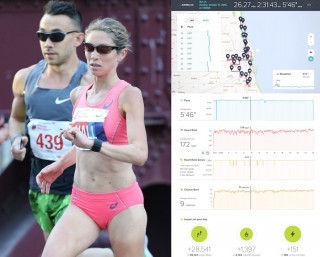
Sara Hall used a Fitbit Surge to monitor her pace and heart rate during the Chicago Marathon. Photos: Courtesy of Fitbit
At Sunday’s Chicago Marathon, Sara Hall made her second marathon a memorable one, chopping an impressive 17 minutes off a challenging 2:48:02 debut earlier this year at the LA Marathon to finish 10th overall—and second American behind U.S. record-holder Deena Kastor—in 2:31:14.
Hall, who spent most of her time preparing for Chicago at altitude in Flagstaff, Ariz., and outside of Addis Ababa, Ethiopia, where she and husband Ryan recently adopted four sisters as their children, was a few minutes off her pre-race goal of 2:28 but managed to maintain her positioning in the second half of the race despite windy conditions.
“In the first half of the race, I was running with a good pack of guys that were clicking off steady miles in the high 5:30s,” Hall recalled. “However, after the halfway point that pack disintegrated and I was on my own to set the pace. Though I felt strong, I wasn’t able to maintain the same pace I did with company, and I could see my Lap Cues alerting me of miles in the 5:40s and some in the 5:50s. I could see my average pace creeping up every few miles and knew that if I wanted to run under 2:30 I would really have to start pushing it.”
Hall, who along with her husband is sponsored by Fitbit, shared some race-day data with us from her Surge GPS watch:
— Miles covered: 26.27 (How’s that for an impressive job cutting the tangents?)
— Average pace: 5:46 per mile
— Average heart rate: 172 bpm
— Calories burned: 1,397
— Calorie burn rate: 9.25 calories/minute
— Total steps taken during the race: 28,541
“I did my best—and in the end didn’t have a finishing time as fast as I thought I was capable of—but I am still pleased with the effort and feel I accomplished in Chicago what I set out to do: experience racing a marathon, see if I enjoyed the event and get a glimpse of my potential over 26.2,” said Hall. “I’m looking forward to tackling the distance again!”
The post Sara Hall Shares Her Chicago Marathon Data appeared first on Competitor.com.
3 Secrets To Success From the Legendary Emil Zatopek
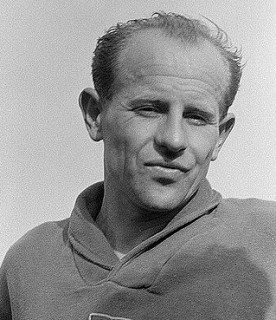
Photo: Deutsche Fotothek/Wikimedia
If you randomly ask a group of runners today who their role models are in the sport, you’ll likely get a list of the usual suspects: Deena Kastor, Meb Keflezighi, Shalane Flanagan, Haile Gebrselassie, Kara Goucher or Galen Rupp to name a few.
And while all of these champions deserve their place among the distance-running pantheon, for some reason one of the greatest runners of all-time seems to be fading into the fog of history. His name is Emil Zatopek, a Czechoslovakian locomotive who rolled his head and swung his body from side to side and didn’t really look like the only person in history to pull off the Olympic distance triple, winning the 5,000m, 10,000m, and marathon in Helsinki in 1952.
Zatopek, who died in 2000, was a running machine, powered by an incessant drive and uncanny ability to suffer through gut-wrenching workouts. His contemporaries nicknamed him the “Beast of Prague” while legendary running journalist Michael Sandrock, who wrote about Zatopek in his soon-to-be reprinted book, Running With The Legends, called him a boundary breaker. “He showed runners who followed what hard work and dedication can accomplish,” Sandrock says. “He was an innovator.”
So what made this humble Czech so special? What was the innovation he demonstrated and how can you apply these lessons to your own running? Read on to learn three key secrets from the greatest runner you’ve probably never heard of.
1. Take chances.
Zatopek reached the top for a number of reasons but one constant element he carried with him throughout his career was his courage. He didn’t fear failure. Andy Yelenak, who hosts the website runningpast.com, which sells inspirational posters of Zatopek, recalls that the great Czech locomotive entered the 1952 Olympic marathon three days after his 10,000m win without ever having raced the 26.2 distance before. “During the race he knows Brit Jim Peters is the favorite and latches on to him,” Yelenak recalls. “At halfway he asks Peters if the pace is good. Peters responds coyly, ‘Too slow.’ Emil drops the hammer, leaves Peters and runs to a new Olympic record, breaking the 30K world record en route.” Zatopek took chances like this in nearly all his races—and it paid off. He didn’t fear failure. In your next race, try something different. Take a chance and do something that might scare you a bit. Surge when you feel strong or start your finish-line kick earlier than usual. Be bold.
2. Connect with the community.
Zatopek was known for doing some eccentric things—like running in place in his bathtub while doing the laundry (old-school multi-tasking)—but he was also someone who connected deeply with his fellow runners. Sandrock recalls an incident in 1968 when Zatopek gave Australian Olympian Ron Clarke his gold medal from the 1952 10,000m event. He made that gesture because Clarke had failed to win gold at the Olympics. “That to me represents a free soul,” Sandrock says. “Imagine, working for years to win a gold medal, and then to give it away. Not for any ego gratification—Emil was an ‘awakened,’ or enlightened human being, meaning he saw the big picture, how we are all connected—but because he knew that Clarke had come close, and Emil had compassion for him.” At your next race, find ways to reach out to your fellow competitors and connect with them. If you finish near the front of the pack, take some time to cheer for those who cross the line behind you.
3. Train like a mad man.
Zatopek’s approach to training was quite simple: In order to run fast in a race, you have to practice running fast in training, he surmised. “He was willing to work for it,” Yelenak points out. “He pushed himself in training far beyond the norms of the day.” An example of Zatopek’s intensity is exemplified in this mind-numbing workout: Once, for two straight weeks, he ran a workout of 50 x 400m in the woods in the morning and then repeated the session in the evening. Ryan Lamppa of Bring Back The Mile says that Zatopek even carried his wife Dana, also an Olympian, on his shoulders in training. “He knew how to train his body and mind to maximal levels,” Lamppa says.
You don’t have to be this extreme with your own training, but remember that you can’t expect miracles to happen on the starting line without putting in the work ahead of time. Make your training count like Zatopek did.
The post 3 Secrets To Success From the Legendary Emil Zatopek appeared first on Competitor.com.
How to Train for Your First 10K
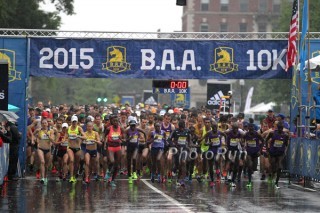
Photo: PhotoRun.net
Why don’t more people love the 10K? It’s accessible even to beginner runners and a great option for those who want to challenge themselves.
Runners who haven’t raced longer than 5K can tackle a 10K race—often with just another 1-2 months of training. The extra training needed isn’t substantial, but it’s important to get it right before you toe the line on race day.
Today we’re going to discuss what training elements are needed before tackling your first 10K.
RELATED: 10 Must-Do 10Ks in the United States
Boost Your Endurance
The 10K is 6.2 miles, or double the distance of the 5K. Even though “double the mileage” seems intimidating, there’s no need to work twice as hard or give yourself double the amount of time to prepare for this race.
In fact, all the work you did to get ready for the 5K will transfer nicely to 10K-specific training.
The most important aspect of training for your first 10K is ensuring you have the endurance necessary to complete the distance. Two variables will be important to complete this goal:
A slight boost in weekly running mileage—up to about 15-20 miles in total—is all that’s needed.
A weekly long run that reaches at least 5 miles.
If you can run about 15 miles per week with a 5-mile long run, then you can complete a 10K.
Add in some extra rest before race day alongside the excitement and adrenaline of racing, and you’ll be able to cover the extra 1.2 miles and cross the finish line of your first 10K race.
Stay Healthy
Running injuries are the unfortunate consequence of poor training habits, not allowing the body to recover properly, or a lack of strength.
With weekly mileage and long runs increasing in distance, the risk of injury also goes up. Limiting that risk is a big priority to ensure you can complete the training, run the race and enjoy the entire process.
It’s helpful to use a “run sandwich” to prepare your body to run, get stronger, and cool down from each run.
— Before each run, do a 5-10 minute warm-up—like the Mattock Warm-up Routine.
— After each run, do 10-15 minutes of strength work—like this runner-specific strength session.
This one strategy will dramatically reduce your injury risk. But it’s also helpful to be cautious with mileage increases. Make sure you’re increasing weekly running mileage by only 5-10 percent every two weeks. And only add a mile to your long run every other week.
Run Faster Workouts
Even beginner runners should run faster workouts. Why? They will…
…increase your fitness, helping you run a faster time on race day.
…stress your body in different ways, helping you stay healthy.
…reinforce proper form, helping you become more efficient.
Of course, there’s no need to get on the track and run grueling interval workouts that leave you drained for the rest of the day. There’s a time and place for those workouts—but not yet!
Instead, a simple workout that you can do anywhere is called a fartlek (Swedish for “speed play”) session. They’re incredibly versatile and flexible, allowing you to run any distance at any pace with any recovery.
Here are two example—each one should be preceded and followed by at least 10 minutes of easy running—with the first one being easier than the second:
Six repetitions of 30 seconds at a hard effort, followed by 1-2 minutes of walking or very easy running
Eight repetitions of 1-minute at a hard effort (5K or 10K pace), followed by 2 minutes of very easy running
These are fantastic introductory workouts that help you practice running fast, but are also accessible and easily achievable to new runners.
Another option is to run a circuit workout that combines repetitions of faster running with strength-training exercises. They’re great for beginner or injury-prone runners.
Run a workout like this just once a week and you’ll be on track (pun intended!) to increase your fitness after just 3-4 weeks of consistency. All of your other runs should be at an easy pace, meaning comfortable, controlled, and conversational.
Putting It All Together
Now you have a complete training plan with all the elements that will help you run a great first 10K:
More endurance from increased mileage and a longer long run.
Fewer injuries from warming up properly and getting stronger with strength training. Conservative mileage increases help, too!
More fitness from faster workouts.
The only thing that’s left is registering and running the race! So what are you waiting for?
RELATED: The Art of 10K Pacing
* * *
About the Author:
Jason Fitzgerald is the head coach at Strength Running, one of the web’s largest coaching sites for runners. He is a 2:39 marathoner, USATF-certified coach and his passion is helping runners set monster personal bests. Follow him on Twitter @JasonFitz1 and Facebook.
The post How to Train for Your First 10K appeared first on Competitor.com.
Alicia Keys to Run the New York City Marathon

Photo: Tinseltown/Shutterstock.com
Award-winning musician, actress and activist Alicia Keys announced on Tuesday that she is running the New York City Marathon.
Keys will be supporting the non-profit Keep a Child Alive, which she co-founded to help get life-saving HIV medication to African children and families who would not otherwise have access to it. In a blog post on Refinery 29, Keys wrote that Keep a Child Alive has helped grassroots programs in Kenya, Rwanda, South Africa, Uganda and India.
“This is what inspires me when my body begins to tire,” she wrote. “My training is nothing compared to the challenging journey these families face every day.”
This will be Keys’ second marathon. She ran a marathon in 2007 in Greece, but this one will be special to her because she’s a native of New York City.
“I thought about all the times I rode a train through the boroughs or drove through the boroughs, and it occurred to me that I’ve never run through the five boroughs. So why not?” she wrote on Refinery 29.
Keys has been a major star in the music scene since her debut in 2001, recording such hits as “Fallin”, “If I Ain’t Got You”, “You Don’t Know My Name”, “No One” and “Girl on Fire.” And perhaps more relevant to her upcoming race, she collaborated with Jay-Z on “Empire State of Mind,” a hip-hop ode to New York City, and released an R&B sequel of her own, “Empire State of Mind (Part II) Broken Down.”
Keys, 34, is the mother of two young children with her husband, hip-hop artist Swizz Beatz. Her youngest was born in December, and Keys often trains pushing him in a stroller.
The New York City Marathon is on Nov. 1.
The post Alicia Keys to Run the New York City Marathon appeared first on Competitor.com.
5 Places to Run In…New York City

The Brooklyn Bridge is a popular running spot. Photo: Shutterstock.com
There are some iconic routes to run while in New York City—routes that offer amazing views of the city while keeping you close to the hustle and bustle. But, there are also some hidden gems on the outskirts of the city that provide peaceful trails and nature’s scenery to log your miles.
Below are five places—some urban, some trail—to run while in NYC:
Central Park
No trip to NYC is complete without a run in the world’s most iconic park. The sheer size of the park (843 acres) can be intimidating, so it’s best to become familiar with the layout before you head there. There is a paved road that circles the park—if you stay on that route, you will run just over 6 hilly miles. But, there are some beautiful places to run within the park as well—most notably, around the Reservoir (which is between 85th and 97th streets), which offers amazing views of NYC. If you ever get turned around while running, just take a look at the lampposts on the inside part of the park; they provide your current location! If you run early, be cautious of the cyclists; if you run later in the day, be on the watch for vehicles and tourists.
RELATED: Destination America—The Ultimate Running Guide
Hudson River Path
One of the best ways to explore New York City is by running the Hudson River Path. Located along the western edge of Manhattan, the paved path begins at the southern tip of the city (by the Staten Island Ferry) and extends to the Bronx. For a scenic point-to-point run, start at the Ferry and head north. You’ll get to see the Statue of Liberty, Ellis Island, 1 World Trade Center, the New Jersey skyline, Chelsea Piers and the USS Intrepid (to name a few!). This route is extremely flexible—you can start anywhere throughout the city if you just head west. And if you are feeling like a longer run (about 11 miles), you can even continue north to the George Washington Bridge (which you can run over).
Staten Island Greenbelt
If you are looking for some off-road running, Staten Island is the place to go! The Staten Island Greenbelt is a chain of parks located in the center of the city’s greenest borough. The Greenbelt is comprised of six primary trails and is over 2,800 acres, making it the second largest public park in New York City. The trails range in distance from 2.6 miles to 12.3 miles (one direction) with a mix of terrain so it is suitable for a first time trail runner as well as a seasoned one! (You can find more information on the trails here.)
Brooklyn Bridge and Prospect Park
Prospect Park is a beautiful park nestled within Brooklyn. Similar to Central Park, there are various hilly loops for running. But if you are looking to get away from the hustle and bustle of the city, this is a great (and close!) option since you won’t see any buildings during your run. One way to get to Prospect Park (and to see another iconic part of NYC) is to run over the Brooklyn Bridge. After running over the bridge, you will want to take a left on Tillary Street and a quick right on Flatbush Avenue (which leads you to the Park). You’ll get views of the Barclays Center and Grand Army Plaza during your 2.5-mile run through downtown Brooklyn!
Inwood Hill Park
Head north of the George Washington Bridge along the Hudson River and you will find Inwood Hill Park, the largest remaining forest land in Manhattan. Although a public park, much of the park remains untouched and non-landscaped, giving it a natural feel. There is a great network of paved and dirt trails which offer stunning views of the GW Bridge.
RELATED: 5 Places to Run In…Boston
RELATED: 5 Places to Run In…Chicago
The post 5 Places to Run In…New York City appeared first on Competitor.com.
October 12, 2015
Lindsey Hein: Coach-Approved Methods to Recover Right
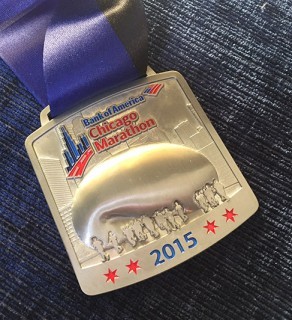
Photo: Theodora Blanchfield
You just ran a marathon. It might be your first, it might be your fifth, but either way you’ve just put your body through a heavy amount of stress both physically and physiologically.
It’s imperative to take your recovery just as seriously as your training—even consider it part of your training plan!
I recommend taking two weeks to straight up chill, followed up by four weeks of recovery. What you need to understand though, is that by “chill,” I don’t mean sit on couch for two weeks.
Here’s my game plan for the days and weeks after your race.
Race Day
Food
Grab the food offered in the post-race chute. It could be hours before you actually eat a meal, so suck down a drink, banana, protein bar—get some calories in your body, even if they aren’t your favorite options. Absolutely do not wait until you get to a restaurant and sit down.
Ice, Ice Baby
As soon as you are able post-race, soak legs in an ice bath for 10 to 15 minutes. Not only does it “hurt so good,” icing helps reduce inflammation.
Take the Stairs
Yes, you deserve to sit on the couch with your feet up the rest of the day. But moving around a little (walking to dinner, and yes, taking a flight of stairs) will help your body more than being completely inactive.
Two Weeks Post-Race
Rest
You’ve put a significant amount of strain on your body. Give yourself three days of no running or cross training. Your body needs the rest, and you’ve earned it! If you’re antsy, hop on your foam roller for some easy rolling.
Hydrate and Eat
Stay hydrated to help your body heal. And while you’ve accomplished a great thing, the stress also temporarily weakens your immune system. Eat healthy foods rich in vitamin C so you don’t get sick.
Celebrate
Relish in your accomplishment. You did it! Plan a dinner with friends to celebrate in the coming week. It’s always more fun when you celebrate with other runners who understand the excitement of finishing your first marathon.
Have a Plan
You’ve probably heard about the post marathon blues. One of the best ways to avoid this is to know your plan. You’ve been following a strict training plan for the last few months and it will likely feel strange to just finish and not have a plan in the coming days and weeks. Plan ahead and sketch it out before the race. Your plan doesn’t necessarily have to be running or exercise focused. I like to spend time in the kitchen learning new recipes during my downtime from running. Take the opportunity to add something else you love to your routine.
Ease back into Exercise
Don’t expect to jump back into running where you were at your pre-race peak. Start with easy runs, cross train and enjoy moving for the fun of it. Listen to your body and do what feels good to you.
The post Lindsey Hein: Coach-Approved Methods to Recover Right appeared first on Competitor.com.
Elizabeth Bailey Weil: 9 Tips for Marathon Recovery
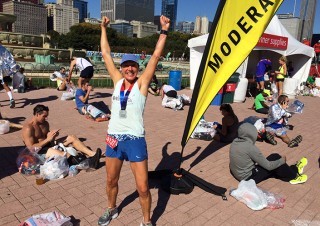
Congratulations! You’ve got a 26.2 finisher’s medal hanging around your neck; now it is time to celebrate and begin your marathon recovery plan. Here are a few tips for the days following your marathon.
Drink
Immediately following a marathon, I attempt to drink an entire bottle of water (the standard 16oz size.) Next, drink a beer! Yes, you heard me right. I love making my next drink a light fizzy beer. There is something about those ice-cold bubbles. Drink whatever sounds good to you, as long as you hydrate!
Eat
One of my favorite things about running a marathon is how hungry I am in the days following. One of my least favorite things is that usually nothing sounds good right after crossing that finish line. Try to get a few simple plain foods in right away to begin to restore glycogen levels–a piece of a bagel, a banana—and then focus on healthy fats and proteins. You’ve burned a lot of calories over the last few hours, and this is what your body needs to begin to recover.
Go Bananas
You may have worked bananas into your pre-race routine, but keep a bunch around for your post-race recovery too. I also often keep a banana on my bedside table in case I wake up hungry in the first couple nights after a race. They are rich in potassium and aid in repairing those tired and achy muscles.
Take Up Golf?
Ok, not really. But, do plan on spending some time with a golf ball, a tennis ball, and a foam roller for the week after your marathon. In fact, I even pack a golf ball in my luggage if traveling to a race. I roll the golf ball beneath my bare feet, use the tennis ball on my quad muscles and my IT band, and I revere my favorite foam roller for my legs, calves, back, glutes, and just about everything.
Swim Laps
That’s right–more exercise, even after a marathon! In fact, I think swimming helps long-run recovery so much that I actually swim right after each of my Sunday long training runs too. Even if you aren’t the greatest swimmer, indulge in a few easy laps on the days following your marathon. The no-impact workout will leave you feeling refreshed while helping to promote circulation to tired muscles.
Spin
I think my gym membership only pays for itself in the months I run a marathon. Since I rarely spend time as a gym rat, I use the weeks after a marathon to try some new classes. I like to spin the day after a marathon. It makes me feel like I’ve done “something” and wards off those post-race blues. I also take advantage of yoga and other stretching classes.
Massage
I’m a big believer in deep tissue massage for runners, and rationalize spending money on massage since the rest of the sport is relatively inexpensive. Find a sports massage therapist near you and tell them what is bothering you post-race. Great therapists will not only work on helping your muscles recover, they will show you additional stretches and techniques to expedite marathon recuperation. Leave for your marathon with a massage already booked in the days after your race.
Get in the bath
Epsom salt baths are a relatively new discovery for me. Now I look forward to them for their restorative benefits—soaking in the magnesium rich salts can reduce inflammation and helps restore electrolytes to your muscles. Pick up a bag of Epsom salts from your local drugstore, add a cup or two to your bath and relax.
Sleep
Not just because you are tired, although that may be the case. Quality sleep is when your body is in healing over-drive, repairing tissue, bones and muscles.
The post Elizabeth Bailey Weil: 9 Tips for Marathon Recovery appeared first on Competitor.com.
Can Social Running Apps Hurt Your Training?

Photo: Shutterstock.com
It’s a fairly established fact that there are pros and cons to running with friends—and ways to fit those group runs into your schedule without compromising your training. But what about virtual friends?
As social running apps have become more ubiquitous, and the technology to enable them more sophisticated, sharing your runs online is getting to be the norm. You can track your miles with RunKeeper, log your routes with MapMyRun, get cheers from friends on Nike+ and Motigo, hang out on the runner’s social network dailymile, or see how you rank on Strava.
“The biggest problem is it can cause you to do some dumb things,” says Rob Manning, who runs Tailwind Coaching, since people tend to go faster and harder than they should.
All that sharing of your workouts on running apps can be motivational, but it can also be too motivational. Manning has one athlete who doesn’t like to post easy runs, because someone will always ask why he ran so slow or make a sarcastic comment. Manning also has clients who want to run the fastest they can even when that’s not on the schedule, just so they can get to the top of the leaderboards. Or, they want to do a challenge—online goals that often revolve around doing a certain number of miles in a certain time—but if they’re not ready for it, “it’s counter-productive,” says Manning.
RELATED: Which GPS Running App Is Right For You?
On the plus side, “it has been such a wonderful tool,” he says, because all these different running apps and websites bring people together who normally wouldn’t be able to train in the same place. That can be motivational and create a sense of accountability.
“It’s your own little cheer squad,” says Larissa Rivers, the run marketing manager for Strava, who also logs a lot of miles on Strava. “I Strava everything,” she admits.
The benefit of new technology is also that many of these running apps are making data available to the casual runner who didn’t previously have access to it. Just by turning on your phone in your pocket, you can get pace, distance, elevation, and even some approximated effort variables, especially if you connect it to a heart rate monitor.
Of course, says Manning, that data isn’t always 100 percent accurate, which can be frustrating if it’s the only data you’re using. “If you’re really looking to drill down into your data, it’s not the platform,” Manning says of Strava, which includes training logs and weekly reports of mileage and intensity.
Sage Canaday, a professional ultra-runner, uses Strava both to track some of the athletes he coaches, and also as his own training blog. He logs 100 percent of his workouts on the platform, with comments or notes, and it gives him weekly reports with graphs and visual data representations.
He also uses it as his primary social media platform, where runners ask him questions and he interacts with fans and other athletes.
“It comes down to personality,” says Canaday. Of course, he has the luxury of being a well-known personality in the running world. He took a very, very easy day the other day just to show his followers on Strava how important easy days are in training.
For many of the rest of us, it can be stressful to open up your training to scrutiny, whether explicit or not. Some people simply perform better when they don’t think about it too hard. And it may not be a coincidence that many of the most hardcore running platforms have had trouble attracting women. “Women [generally speaking] don’t have to pound their chest every time they go out the door,” says Manning.
There are plenty of running apps and networks to choose from too, serving a variety of runners. Along with the ones already mentioned, you can also try Endomondo or the popular-in-Europe Runtastic. (Or, if that just sounds like a lot of stuff to deal with, Runator aggregates all the apps into one app.)
The key is finding the right one for you and your friends, and finding the right way to fit it into your training.
Use the apps for motivation or as a way to measure yourself, either against others or against yourself over multiple weeks. For example, Canaday will look to see what the fastest times are up Green Mountain, where he lives in Boulder, then he’ll measure himself against those times when he goes for a hard run up it. He can even use the compare tool to see where he fell off the pace or where someone else—someone he might never have actually seen out on his run—passed him.
You can also use most popular apps for basic workout tracking and to find possible routes or non-virtual group runs. Rivers likes to use Strava’s Flyby feature to find runners she passed on her runs. She can then see what routes and places they like, or even make friends with them.
And it makes it easy for your coach to check up on you, since they can just see your public profile. No lying here.
But, no matter what, you should still listen to your coach, especially if you’re using a coached program on one of the social apps. Strava launched a series of coached plans from Greg McMillan, and Runkeeper offers training plans from Jeff Galloway. So when your coach says you need an easy day, take an easy day, even if your friends might make fun of you for it.
“There’s definitely a little danger in that,” admits Canaday, though it’s the same danger that comes from any training groups.
If you’re worried about what people think, Rivers says, then you can make comments on the workout or change the title of the run. You can also make workouts private. “No one really looks that hard at your pace anyway,” she said, unless you’re a professional athlete. Many professional athletes do choose to block their heart rate data (or power meter information on their bike).
The key to really making whatever app you choose work for you is making it as social as possible. Remember being on Twitter when you didn’t have any friends? It was boring. Follow as many people as you can, said Rivers. It allows you to see what routes and workouts they like to do, and to learn from them.
Create clubs, groups, and challenges that mesh with your training plans, allowing you to find people who might be up for doing your workouts with you, create mini-leaderboards just for your group, and even upload planned routes.
“The benefits totally outweigh the risks,” says Canaday.
The post Can Social Running Apps Hurt Your Training? appeared first on Competitor.com.
Molly Huddle Wins Another National Title at Tufts 10K
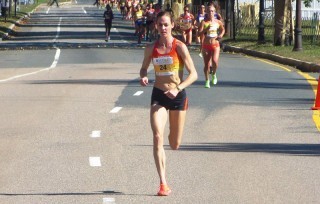
Molly Huddle jumps out to an early lead in the 2015 USA 10K Championships at the Tufts Health Plan 10K for Women (Photo: Chris Lotsbom/Race Results Weekly)
(c) 2015 Race Results Weekly, all rights reserved. Used with permission.
BOSTON — Molly Huddle’s theme at today’s Tufts Health Plan 10K for Women was plain and simple: grind. The 31-year-old had Shalane Flanagan’s 31:03 national record on her mind, something she wanted to eclipse on home soil here in New England. Though she’d ultimately come up short, Huddle’s winning mark of 31:21 was a course record, championships record and personal best. It was her fourth win at this event, and she collected her 19th national title.
“I was just grinding the whole way so that I wouldn’t slow down,” said Huddle, holding the winner’s wreath. “I have a certain goal for every race, and today it was trying to run fast.”
From the gun, Huddle and training partner Emily Sisson went to the front, splitting the mile in 5:00 with Ethiopia’s Sentayehu Ejigu a step behind. Crossing the Mass. Ave bridge with Boston’s sun-splashed skyline off her shoulder, Huddle continued to hammer step after step. She was alone a mere seven minutes into the contest, well out in front.
Huddle had hoped someone would go with her and keep the pace fast. Together, Huddle and Sisson—who both train under coach Ray Treacy in Providence—had planned to start off at five minute pace and see how long they could hold it. Yet Huddle was the only one who could keep that tempo, reaching two miles in alone in 9:58.
“It was just challenging. That’s pretty fast to do by yourself, so I thought I’d give it a go and see what’d happen,” she said. “I just looked down and tried to grind as long as I could. [Flanagan’s record] was on my mind, and I knew it would be a really tall order unless there was someone with me. But I thought ‘Maybe you’ll feel good and maybe you’ll be able to do it.'”
Through 5K in 15:37, Huddle ran along the Charles River with an extra pep in her step. Her arms pumped a bit harder than usual, and her eyes stayed glued on the asphalt ahead; they would only lift when she tapped her watch each mile. By four miles, Huddle’s lead on Sisson was 19 seconds.
Taking the inbound turn back onto the Mass. Ave. bridge, Huddle hit a wall of sound. Women still making their way through the second mile screamed encouragement, cheering as loud as the famed women of Wellesley College during the Boston Marathon.
Despite the extra encouragement, Huddle couldn’t quite get back on national record pace. Whether it was due to the lack of a competitor alongside her or the lingering fatigue from last week’s 10-mile national championships (which she won in a national “best” of 51:44), Huddle simply said she didn’t have the extra gear needed to eclipse Flanagan’s mark.
Even so, she did put a shellacking on the competition. In the final mile, Huddle’s lead was greater than a city block. She’d zoom past the Public Garden and through the finish in 31:21, breaking Ejigu’s event record by 12 seconds.
“I’m just happy to win and get a road PR, so that’s nothing to be disappointed about!” said Huddle, who joins Lynn Jennings as the only athletes to have won this race at least four times (Jennings has six titles). Huddle took home a total of $12,050 thanks to today’s win. When noted that this was her 19th USA national title, she laughed. “I think that just means I’ve run for a lot of years now, which means that I’m getting a little further along in my career. But if you told me that 10 years ago that’s where I’d be now, I wouldn’t believe you. It’s pretty special.”
In her post-race interview, Huddle was quick to give credit to Sisson, celebrating her 24th birthday with a runner-up finish in 32:18. Sisson has quickly made the transition from collegian to professional, training alongside Huddle a majority of the time.
“I was happy to finish second to Molly. That was the goal going into today,” said Sisson. “I just know I am going the right path following them [Sisson and coach Treacy], so it’s really comfortable. The transition has been so smooth.
Rounding out the top three was Ejigu (32:37), with a healthy Kim Conley and Brianne Nelson completing the top five in 32:38 and 32:48, respectively.
The post Molly Huddle Wins Another National Title at Tufts 10K appeared first on Competitor.com.
Ryan Hall's Blog
- Ryan Hall's profile
- 21 followers



